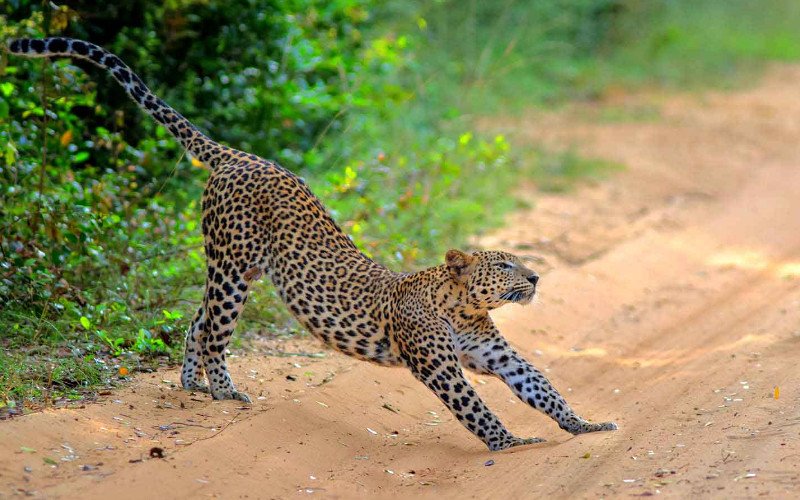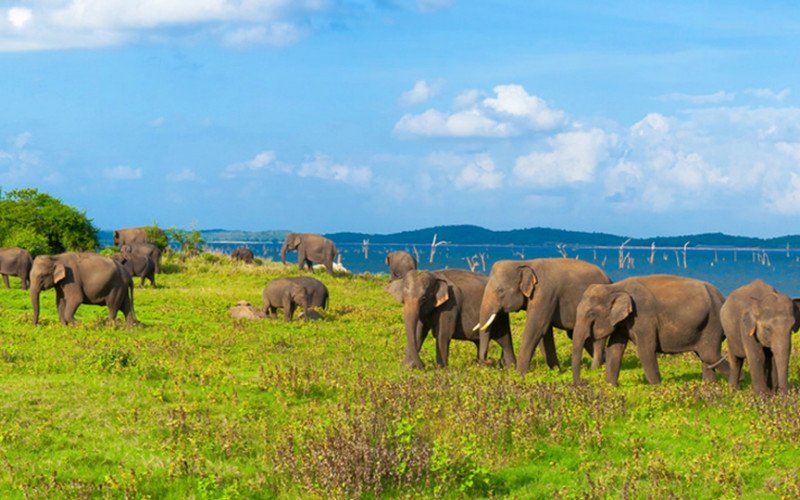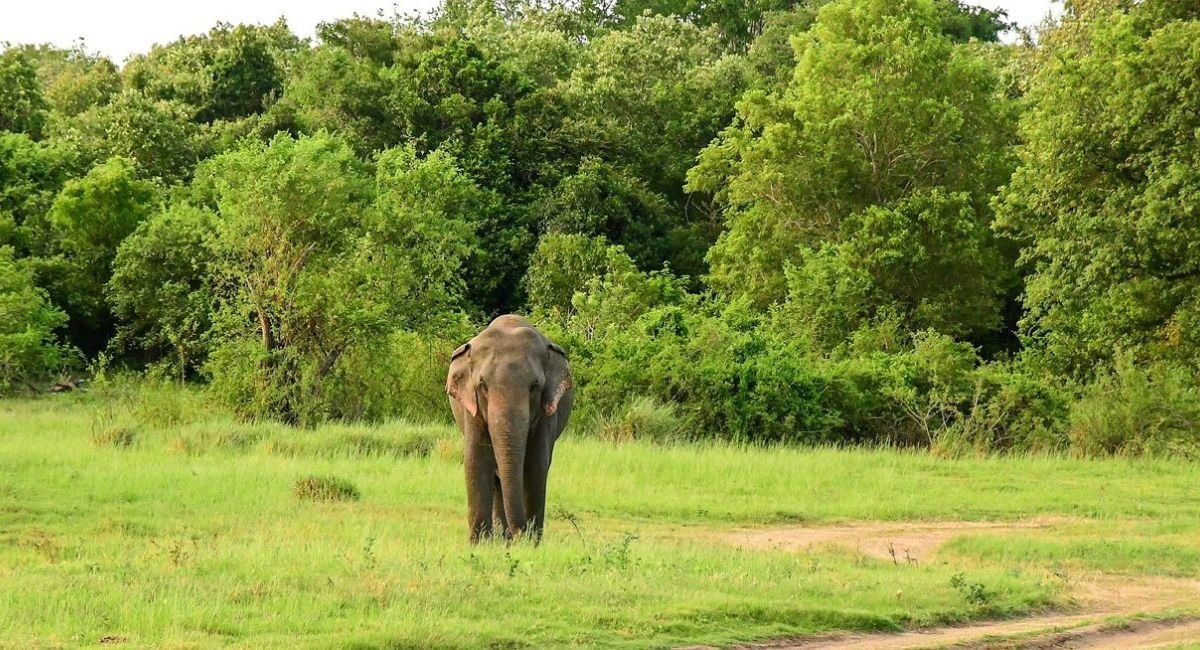Wilpattu National Park is one of Sri Lanka’s most iconic and largest national parks, renowned for its unique landscapes, rich biodiversity, and historical significance. With its pristine wilderness, abundant wildlife, and historical value, Wilpattu offers visitors an authentic and rewarding experience of Sri Lanka’s natural heritage. Whether you’re a wildlife enthusiast, nature lover, or history buff, this national park has something special to offer.
Location: Discover Wilpattu in Puttalam District🗺️
Wilpattu National Park is located in the Puttalam District, which lies within the North Western Province of Sri Lanka. The park is situated on the western side of the island, close to the north-central plains and about 30 kilometers from the coastal city of Puttalam. It is approximately 180 kilometers north of Colombo and easily accessible from major towns such as Anuradhapura and Kurunegala.
Spanning Over 1,300 Square Kilometers🌍
Wilpattu National Park covers a vast area of approximately 1,317 square kilometers (131,700 hectares), making it the largest national park in Sri Lanka. The park is characterized by its diverse ecosystems, including tropical dry evergreen forests, grasslands, wetlands, and lakes. The most distinctive feature of Wilpattu is its network of natural lakes or “Villus” (small, seasonal water bodies), which are scattered across the park and provide vital water sources for wildlife.
Significance of Wilpattu: A Biodiversity and Historical Treasure🌱
🦁 Biodiversity Hotspot
Wilpattu is a biodiversity hotspot in Sri Lanka, home to over 30 species of mammals, including Sri Lankan elephants, leopards, sloth bears, deer, wild boar, and monkeys. The park is particularly famous for being one of the best places in Sri Lanka to observe the elusive Sri Lankan leopard, one of the island’s most iconic and endangered species. With over 200 species of birds, Wilpattu also offers excellent birdwatching opportunities, including waterfowl, raptors, and endemic species like the Sri Lanka junglefowl and serpent eagle.
🏰 Historical Significance
Wilpattu has a deep historical connection to ancient Sri Lanka. It is believed to have been a royal hunting ground during the reign of King Devanampiyatissa (3rd century BCE). The park also features several ancient Buddhist sites, including temples, caves, and monastic ruins, reflecting the region’s rich history of human settlement.
🌾 Wetland Ecosystem: The Villus of Wilpattu
The Villus (lakes) in Wilpattu serve as vital wetland ecosystems, attracting a variety of water-dependent species like migratory birds, crocodiles, and aquatic mammals. The Villus is also an essential stopover for migratory birds, particularly during the northward migration season.
History: From Royal Hunting Grounds to National Park📜
Wilpattu has been a protected area for wildlife for several decades. Declared a sanctuary in 1938, the park became a national park in 1983. The park’s establishment aimed to protect Sri Lanka’s flora and fauna from growing threats such as habitat destruction and poaching. Historical evidence of human habitation, including caves and ruins from the Anuradhapura period (377 BCE–1017 CE), connects the park to ancient civilizations.
Best Time to Visit Wilpattu: Dry Season vs Wet Season🕰️
The best time to visit Wilpattu National Park is during the dry season, which lasts from May to September. The park’s Villus dry up, concentrating wildlife around the remaining water sources, making it easier to spot elephants, leopards, and other species. The wet season (October–April) is also excellent for birdwatching, but the rain can make roads difficult to navigate.
How to Reach Wilpattu National Park🚗
✈️ By Air
The nearest international airport is Bandaranaike International Airport (CMB) in Colombo, approximately 180 kilometers away. Visitors can take a private taxi or hire a vehicle to the park.
🚙 By Road
Wilpattu is accessible via the A6 Highway from Colombo (about 4–5 hours) or from Anuradhapura (around 1 hour). From Puttalam, the park entrance is only 30 kilometers away, a 45-minute drive.
🚌 Public Transport
Buses run from Colombo to Puttalam, from where visitors can take a taxi or tuk-tuk to the park entrance. Alternatively, buses from Anuradhapura also connect to the park.
Travel Activities: Explore Wilpattu’s Wilderness🦓
🚙 Wildlife Safaris
The primary activity at Wilpattu is wildlife safaris. Guided jeep tours offer visitors the chance to explore the park’s diverse landscapes, spotting elephants, leopards, wild boars, and various deer species. Safaris are conducted in the early morning and late afternoon.
🐆 Leopard Watching
Wilpattu is famous for its Sri Lankan leopard population. With some patience, visitors can catch glimpses of these elusive predators as they roam the dense forests or drink from the Villus.
🦅 Bird Watching
Wilpattu is a birdwatcher’s paradise, attracting waterfowl, raptors, and endemic species like the Sri Lanka junglefowl and serpent eagle. Guided birdwatching tours are available.
📸 Photography
The park’s stunning landscapes and abundant wildlife make it a fantastic destination for photography. Early mornings and late afternoons offer the best light to capture leopards, elephants, and breathtaking vistas.
🚶♂️ Nature Walks and Trekking
Visitors can also enjoy nature walks through certain park areas, giving them closer encounters with the park’s flora and fauna.
🏛️ Cultural Exploration
For history buffs, Wilpattu offers ancient archaeological sites, such as Buddhist temples, caves, and the Tibbotuwa rock, featuring ancient inscriptions.
Travel Activities: Explore Wilpattu’s Wilderness🐻🐾
🚙 Wildlife Safaris
The primary activity at Wilpattu is wildlife safaris. Guided jeep tours offer visitors the chance to explore the park’s diverse landscapes, spotting elephants, leopards, wild boars, and various deer species. Safaris are conducted in the early morning and late afternoon.
🐆 Leopard Watching
Wilpattu is famous for its Sri Lankan leopard population. With some patience, visitors can catch glimpses of these elusive predators as they roam the dense forests or drink from the Villus.
🦅 Bird Watching
Wilpattu is a birdwatcher’s paradise, attracting waterfowl, raptors, and endemic species like the Sri Lanka junglefowl and serpent eagle. Guided birdwatching tours are available.
📸 Photography
The park’s stunning landscapes and abundant wildlife make it a fantastic destination for photography. Early mornings and late afternoons offer the best light to capture leopards, elephants, and breathtaking vistas.
🚶♂️ Nature Walks and Trekking
Visitors can also enjoy nature walks through certain park areas, giving them closer encounters with the park’s flora and fauna.
🏛️ Cultural Exploration
For history buffs, Wilpattu offers ancient archaeological sites, such as Buddhist temples, caves, and the Tibbotuwa rock, featuring ancient inscriptions.
Conclusion: A Unique Experience Awaits at Wilpattu🌿 🌿
Wilpattu National Park is a treasure trove of natural beauty, wildlife, and historical significance. Its diverse ecosystems, ranging from wetlands to forests, offer visitors a chance to explore Sri Lanka’s wild heart. Whether you’re hoping to spot a Sri Lankan leopard, enjoy a peaceful safari, or explore ancient ruins, Wilpattu provides an unforgettable experience. Its commitment to conservation ensures that Wilpattu will remain a key destination for generations to come.
Best Tours at Wilpattu
Discover the best tours in Sri Lanka, where every journey unveils a new wonder. Explore ancient ruins, lush tea plantations, golden beaches, and vibrant wildlife. Experience the magic of this tropical paradise like never before!




